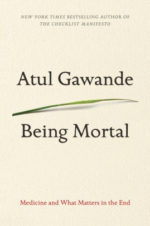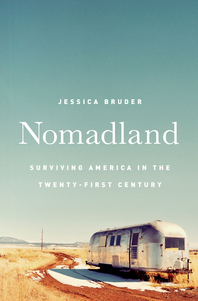Teacher Work and Teacher Unions
Posted on | December 20, 2017 | Comments Off on Teacher Work and Teacher Unions
This site, named Mindworkers, is witness to my central belief that teachers think for a living, and ought to be organized as professional workers with expansive rights and responsibilities rather than industrial workers. This theme is most completely developed in United Mind Workers: Unions and Teaching in the Knowledge Society.
Although it was published by Jossey-Bass in 1997, most of the ideas in the book are still current and the need to rethink how teachers are organized is all the more pressing given the institutional challenges to public education, which I describe in two books about institutional change.
For teachers to be organized as mindworkers, their unions need to engage in continuous organizing. Gaining a recognition agreement and a contract is never enough. The relationship of teachers to their union can never be taken for granted, even if forms of union security persist. In addition, teachers as union members need to vastly increase the scope of their engagement with their workplaces, some through traditional contracts, and some through other avenues, such as budget discussions and assessment policy for students and teachers. United Mind Workers brings forward three avenues of continuous organizing:
First, teachers need to organize around quality, both teacher quality and educational quality. Doing so changes the authority/responsibility dimensions of teaching as an occupation. A slim companion book to United Mind Workers called, Taking Charge of Quality: Teachers, Unions and Education Reform (Jossey-Bass, 1998) is intended as a practical guide.
Second, teachers need to organize around schools as work places. Historically, school districts have been the focus of union organizing because public school districts have always been the employer, but the advent of charter schools, contracting out, and other forms of hybrid employment makes the central role of school districts less certain and under constant challenge.
Charters, vouchers, and other forms of privatization are the most obvious challenge, but even if they did not exist there is an inherent challenge to the large hierarchy form of organization that school districts represent. Reformers have come to realize that the economies of scale that applied to big industrial organizations, on which school districts are modeled, make huge school districts less efficient and effective than they should be. Given the desire of parents and teachers to have more variety in school offerings and flexibility in organization, it becomes logical to move the management authority to the school level. Doing so, of course, has huge implications for labor relations.
Third, United Mind Workers argues that teaching should be organized around careers rather than jobs. Almost all income and social security that teachers now possess requires that they stay in a classroom within the same school district. Occupational mobility patterns suggest that teachers need a way to be represented as they move from one job to another and from one place to another. Pensions and medical benefits should be independent of a specific employer, and they should accrue to teachers whether they are work in a public school classroom, a charter management organization, or whether they are writing educational software. They are still teachers, and representing the full arc of a teacher’s career should be union work.
The first chapter of United Mind Workers, click HERE.
More Recent Writing
Recent pieces, written in ‘On California,’ the EdWeek.org column that I conducted, carried forward the themes developed in United Mind Workers. (For a complete listing go to ‘On California’ and then choose “Teacher Unions” from the category menu.)
- It is traditional to write about organized labor on Labor Day. It is also traditional to bemoan the low state of unions in the United States where the percentage of private sector workers who are organized has fallen to about 7 percent. But I see some bright spots, particularly for teachers in California.
- It’s Dickensian, the best and worst of times for teacher unions.
- Big ideas provide big opportunities. Al Fondy was a Falstaff of a man with arms like a steelworker and a tongue to match. He led his Pittsburgh (Pennsylvania) Federation of Teachers on three strikes and was a formidable negotiator. And Fondy had a big idea. He began to see his union as a professional organization, and two decades after union recognition he was to make its relationship to school success explicit.
Before Mindworkers, I Wrote
Two earlier books and a number of other publications led my mind to Mindworkers. First, The Changing Idea of a Teachers Union, illustrates how teacher unions undergo “little revolutions” that change their ideology and practice over time. In a typology first developed by my co-author Douglas Mitchell, the book points out important differences in the way unions operate when they are representing industrial workers (laboring work), craft workers, artists, or professionals.
This typology played an important part in my later thinking. Read the relevant chapter.
The book also illustrated how parents and community members play a pivotal role in changing the definition of teacher unionism, moving it from one generation to the next. In virtually every case where union ideology changes, parent activists lined up on the winning side and tipped the balance of power.
The Changing Idea is out of print but is available in libraries and from used book sellers.
The second book grew from the ferment in teacher labor relations that took place in the late 1980s. The American Federation of Teachers, under the leadership of Albert Shanker, saw that public education was losing both public confidence and the capacity to perform as it should. It was “union work,” Shanker argued, to set things right. Several AFT locals and some affiliated with the National Education Association sought to organize differently. Case studies of these districts—including Rochester, Cincinnati, Miami, Pittsburgh, and others—can be found in A Union of Professionals (Teachers College Press, 1993).
Although the case studies are dated, the first and last chapters contain summaries of the differences between industrial unionism and how teachers can organize as professionals. For a summary of the book.
There are also several other teacher-union related entries among the ‘Projects’ on this web site.




